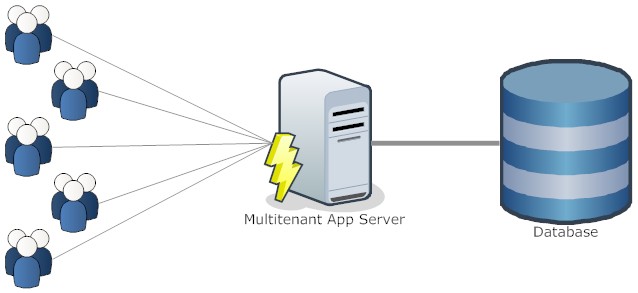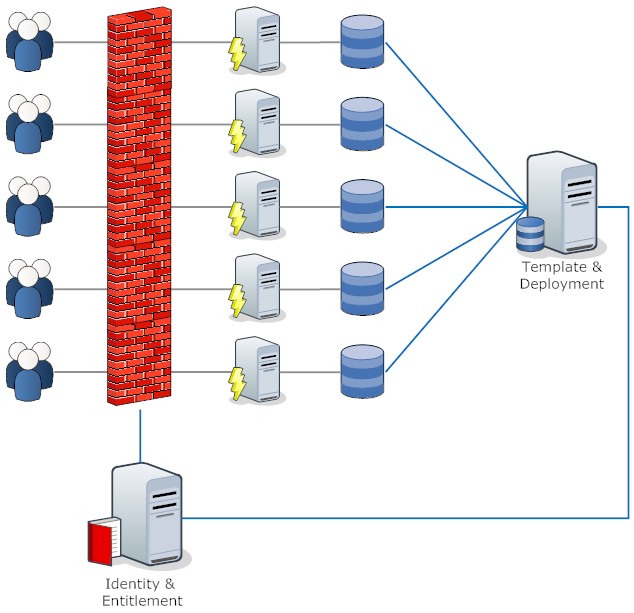Multitenancy - a blast from the past?
Wikipedia defines multitenancy as: " Software Multitenancy refers to a software architecture in which a single instance of a software runs on a server and serves multiple tenants ... Multitenancy contrasts with multi-instance architectures, where separate software instances operate on behalf of different tenants "
Looking at contemporary architectures like Docker, OpenStack, Bluemix, AWS or Azure, I can't see any actual payloads being multi-tenant. Applications by large run single tenant. The prevalent (and IMHO only current valid use case) is the administrative components that manages the rollout of the individual services. So instead of building that one huge system, you "only" need to have a management layer (and enough runtime).

The typical argument for a multitenancy deployment is rooted in the experience that platforms are expensive and hard to build. So when one platform is ready, it is better everybody uses it. With Virtual Machines, Containers and PaaS this argument becomes weaker and weaker. The added complexity in code outweighs the cost for spinning up another instance (which can be done in minutes).
A multi-instance architecture mitigates these efforts:

The burden to manage the tenants lies with the Identity and Entitlement management. Quite often (see Bluemix) those are only accessed by admin and development personnel, so their load is lighter. So next time someone asks for multitenancy, send them thinking.
Looking at contemporary architectures like Docker, OpenStack, Bluemix, AWS or Azure, I can't see any actual payloads being multi-tenant. Applications by large run single tenant. The prevalent (and IMHO only current valid use case) is the administrative components that manages the rollout of the individual services. So instead of building that one huge system, you "only" need to have a management layer (and enough runtime).

The typical argument for a multitenancy deployment is rooted in the experience that platforms are expensive and hard to build. So when one platform is ready, it is better everybody uses it. With Virtual Machines, Containers and PaaS this argument becomes weaker and weaker. The added complexity in code outweighs the cost for spinning up another instance (which can be done in minutes).
A multi-instance architecture mitigates these efforts:

The burden to manage the tenants lies with the Identity and Entitlement management. Quite often (see Bluemix) those are only accessed by admin and development personnel, so their load is lighter. So next time someone asks for multitenancy, send them thinking.
Posted by Stephan H Wissel on 03 November 2015 | Comments (1) | categories: Container Docker K8S Software